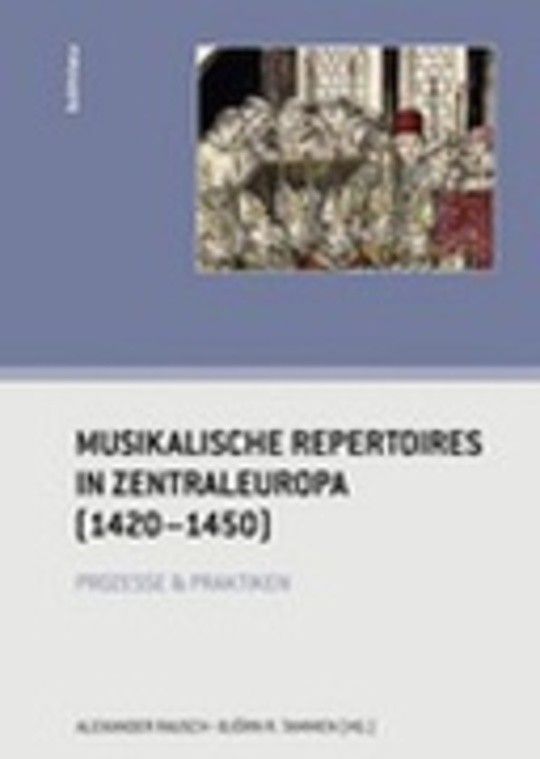
Musikalische Repertoires in Zentraleuropa (1420-1450)
Free
Description
Contents
Reviews
Language
German
ISBN
Unknown
Musikalische Repertoires in Zentraleuropa (1420–1450)
Cover
Backcover
Impressum
ISBN 978-3-205-79562-9 Web-Link zur Buchdetailseite der Printausgabe
Inhalt
Vorwort
Abkürzungsverzeichnis
Björn R. Tammen
Von Prozessen und Praktiken, Schnittstellen und Schmelztiegeln, Raumbefunden und musikalischen Repertoires. Anstelle einer Einleitung
Grundsätzliches
Reinhard Strohm
Ritual – Repertoire – Geschichte :
Identität und Zeitbewusstsein
Mehrstimmige
Repertoires – Sammlungen & Komponisten
Rudolf Flotzinger
Anlage und Herkunft des Trienter Codex 93
Ian Rumbold
Hermann Pötzlinger und seine Musiksammlung
Der Mensuralcodex St. Emmeram als Zeugnis der zentraleuropäischen Musikpraxis um 1440*
Peter Wright
The Transmission of English Liturgical Music to Central Europe c.1430 – c.1445*
Alexander Rausch
Netzwerke lokaler Komponisten in Wien um 1430
Paweł Gancarczyk
Presulem ephebeatum by Petrus Wilhelmi de Grudencz and the Musical Identity of Central Europe*
Mehrstimmige Repertoires – Kontexte & Funktionen
Margaret Bent
“Libri de cantu” in the Early Fifteenth-Century Veneto : Contents, Use and Ownership*
Wolfgang Fuhrmann
Subjektivierung von Polyphonie
Die Devotionsmotette im Kontext der Gattungstransformation 1420–1450*
Björn R. Tammen
Anverwandlungen vokaler Mehrstimmigkeit
im Bild und durch das Bild
Fallbeispiele aus der ersten Hälfte des 15. Jahrhunderts*
Die einstimmige Liedkunst
Ulrich Müller (†)
Sangvers-Lyrik und Sangvers-Epik
in deutscher Sprache
Überlegungen zum musikalischen Repertoire im habsburgischen Zentraleuropa im späten 14. Jahrhundert und in der ersten Hälfte des 15. Jahrhunderts
Stefan Rosmer
Höfische Liedkunst im Kloster, in der Stadt und andernorts
Zur Rezeption der geistlichen Lieder des Mönchs von Salzburg in der ersten Hälfte des 15. Jahrhunderts
Marc Lewon
Die Liedersammlung des Liebhard Eghenvelder :
im Ganzen mehr als die Summe ihrer Teile*
Jenseits von
musikalischen
Repertoires
Susana Zapke
Musikalische Bildungs- und Ausbildungsprofile
im Wissensraum Wien, 15. Jahrhundert
Dokumente zu ihrer Erschließung*
Anhang
Abstracts
Register
Farbtafeln
Autorinnen & Autoren
The book hasn't received reviews yet.

